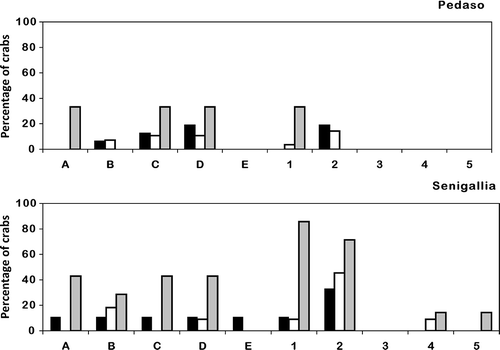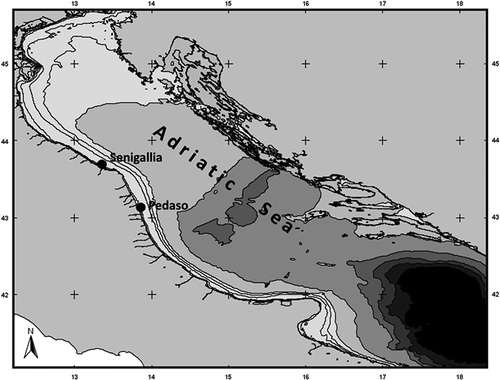Figures & data
Table I. Carapace average surface (± SD) (mm2) of adult males and females and range of carapace surface (mm2) for juveniles of Inachus communissimus collected off Senigallia and Pedaso
Figure 2. Hooked setae found on the rostral and central region of the carapace of Inachus communissimus sampled in the Northern Adriatic Sea: shaft curved, denticules on the inside of the curve that appear to form distally a single row (A,B); hooked setae found on the lateral, central and back regions of the carapace: shaft curved with denticules all around and all along (C–E); hooked setae found on the lateral and back region of the carapace (F). Scale bars: A–C, 50 μm. D and E, 20 μm. F, 100 μm.
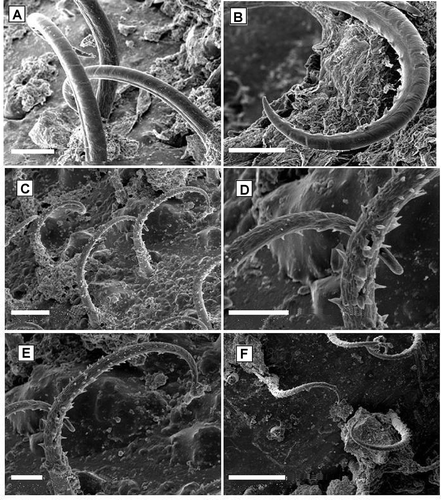
Figure 3. Relationships between ascidian cover and carapace area of each studied crab (y = 0.15x − 1.54, n = 74, r = 0.55, p < 0.001). Female, empty squares; males, black spots; juveniles, empty triangles.
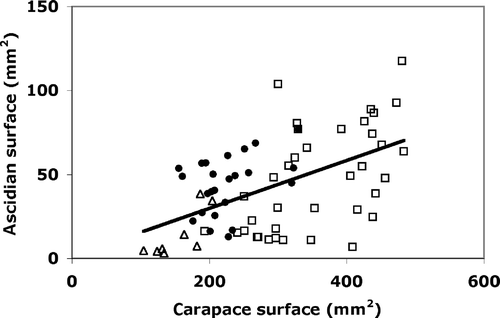
Figure 4. Percentage of crabs covered by ascidians on the various regions of the exoskeleton: rostrum (A), left side of carapace (B), right side of carapace (C), central region of carapace (D), back region of carapace (E), claws (first pair of pereopods) (1), second pair of pereopods (2), third pair of pereopods (3), fourth pair of pereopods (4), fifth pair of pereopods (5). Females, black bars; males, white bars; juveniles, grey bars.
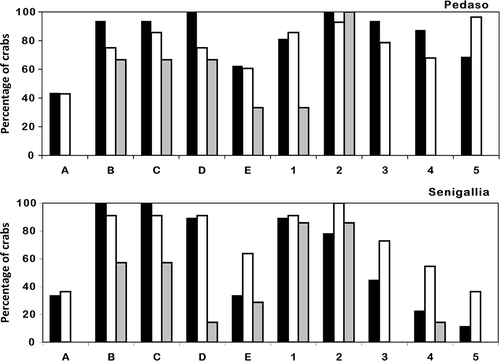
Figure 5. Percentage of crabs covered with algae on the various regions of the exoskeleton: rostrum (A), left side of carapace (B), right side of carapace (C), central region of carapace (D), back region of carapace (E), claws (first pair of pereopods) (1), second pair of pereopods (2), third pair of pereopods (3), fourth pair of pereopods (4), fifth pair of pereopods (5). Females, black bars; males, white bars; juveniles, grey bars.
